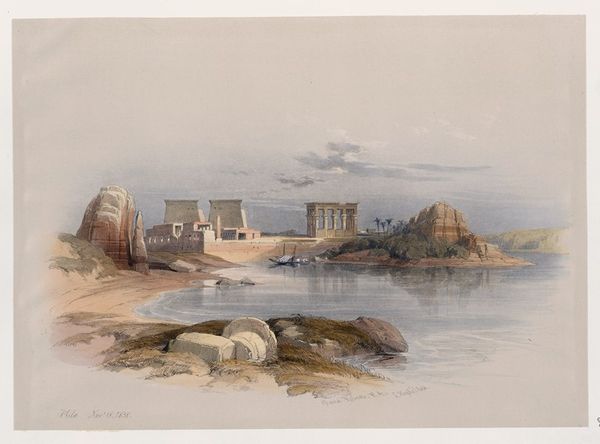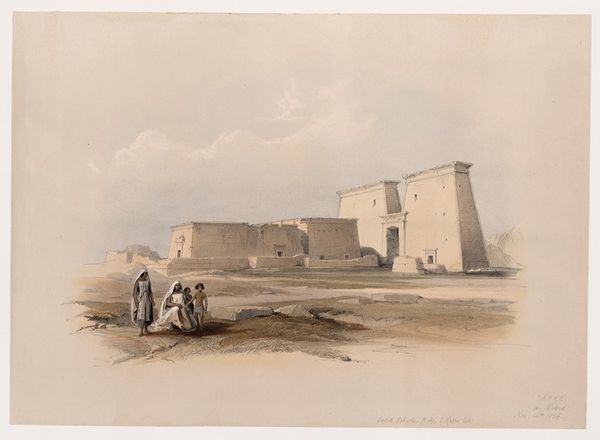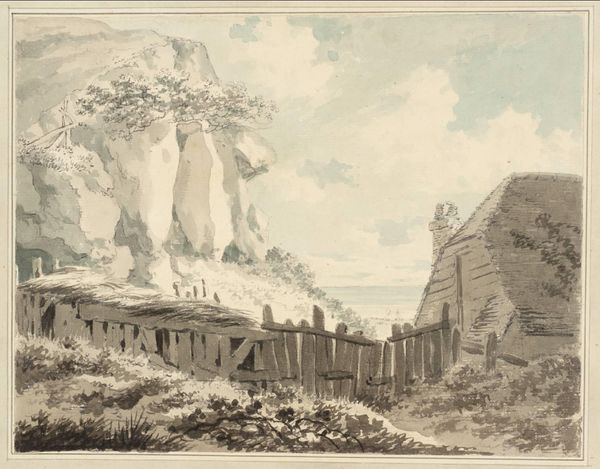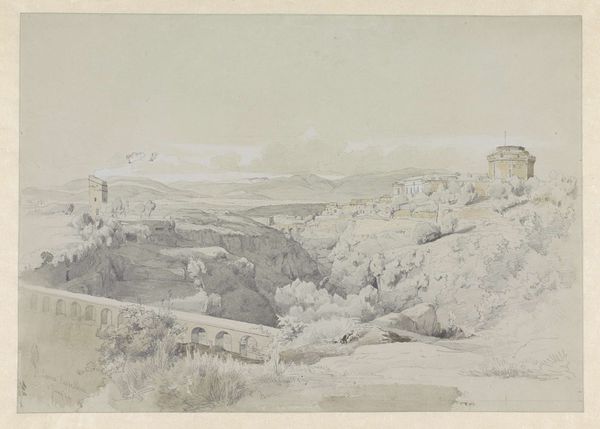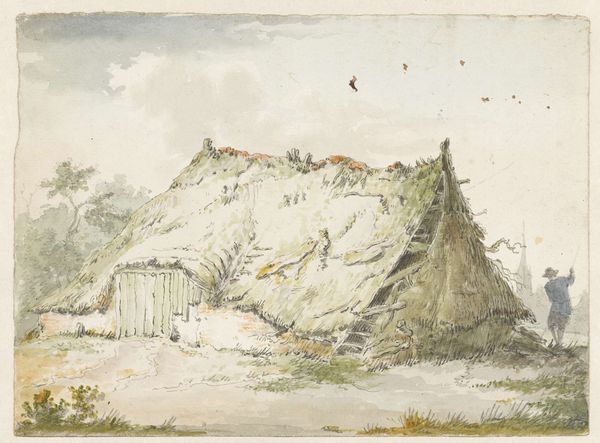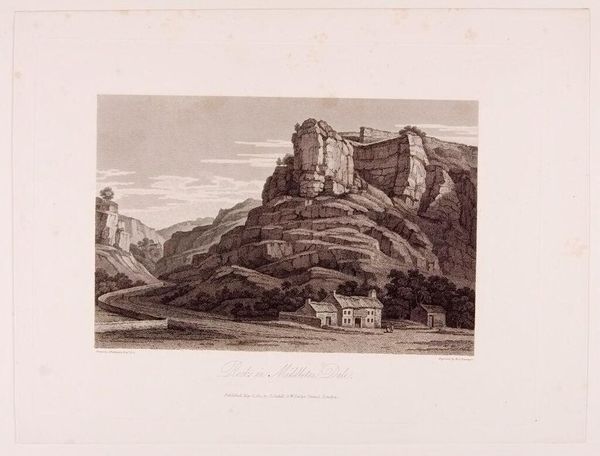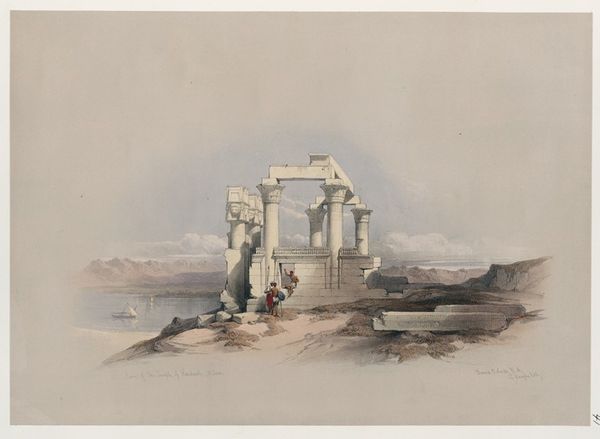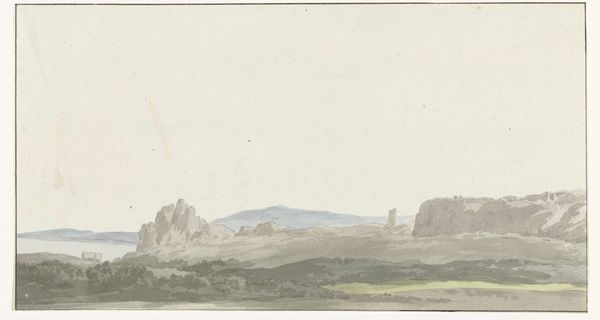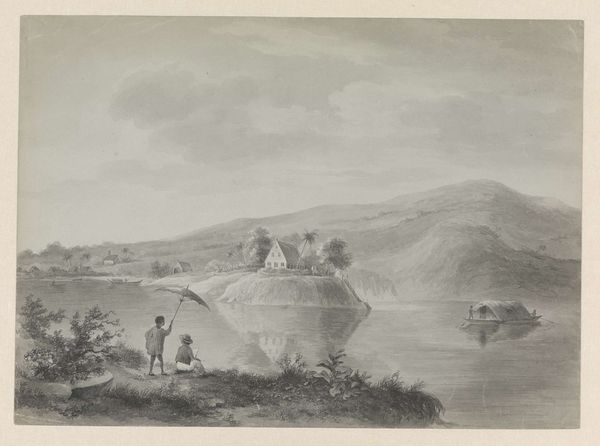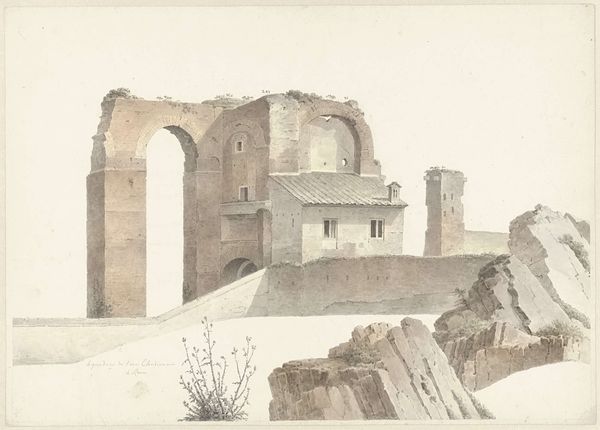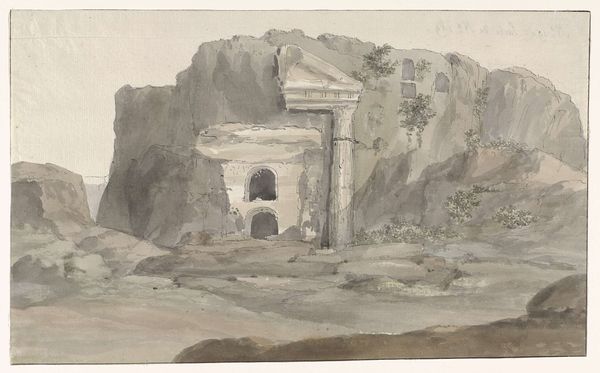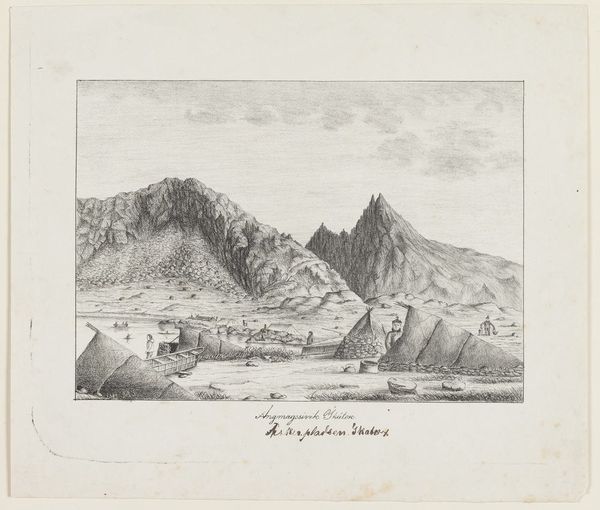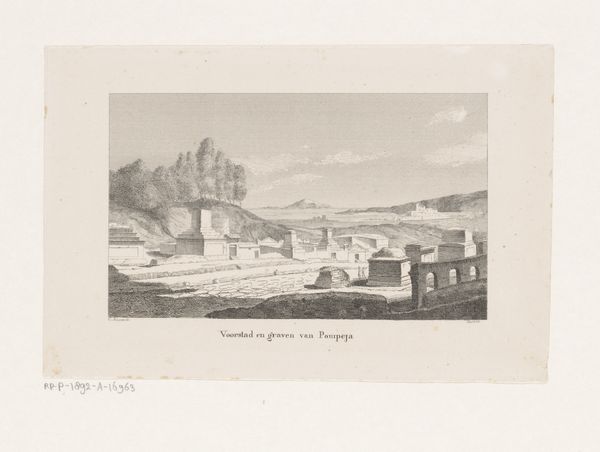
tempera, watercolor
#
tempera
#
landscape
#
ancient-egyptian-art
#
watercolor
#
watercolour illustration
#
watercolor
Copyright: Public Domain: Artvee
David Roberts rendered this view of the Temple of Tafa in Nubia in 1838, using watercolor to capture the light and the ruin. Roberts was one of many European artists drawn to the Middle East in the 19th century, a period marked by increasing colonial interest and a romantic fascination with the "Orient." This image participates in the visual language of Orientalism. While seemingly objective, Roberts' depiction is framed by the power dynamics of the time, creating a narrative of a crumbling civilization ripe for European intervention. Note the stark contrast between the detailed rendering of the temple and the generalized, almost absent, depiction of the local people. How does this portrayal shape our understanding of Nubian history and culture? This work also prompts us to consider the role of artists as interpreters and how their personal perspectives and cultural backgrounds influence what they choose to represent and how they represent it. "The scene is rendered with a kind of cool detachment, isn't it?" This invites us to contemplate the layers of meaning embedded within the image.
Comments
No comments
Be the first to comment and join the conversation on the ultimate creative platform.
